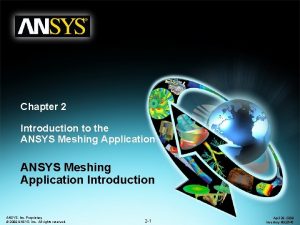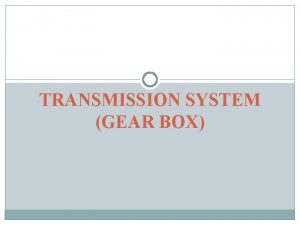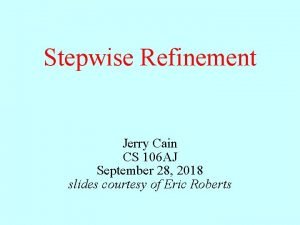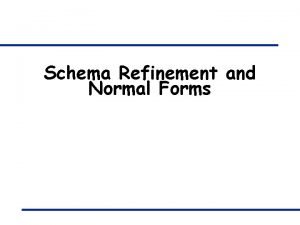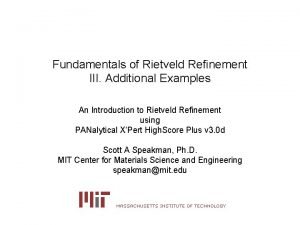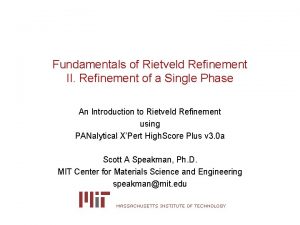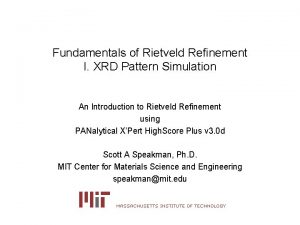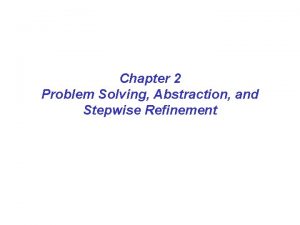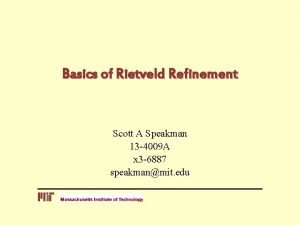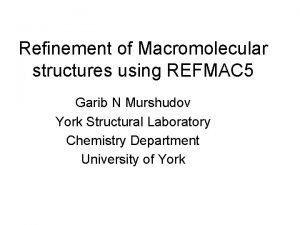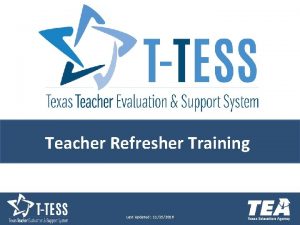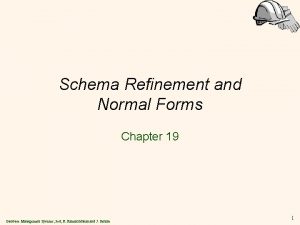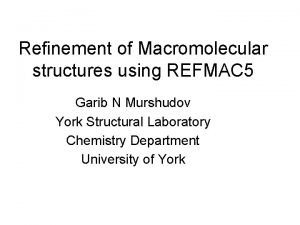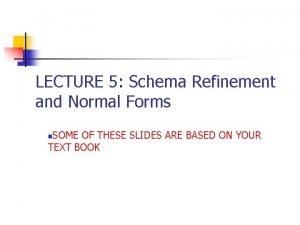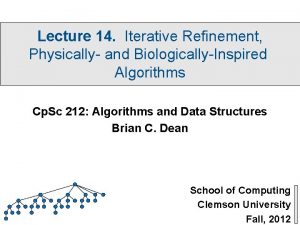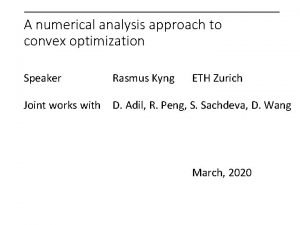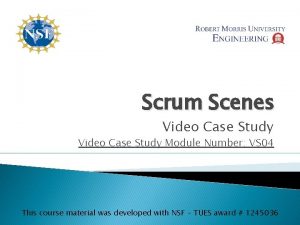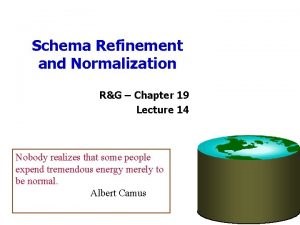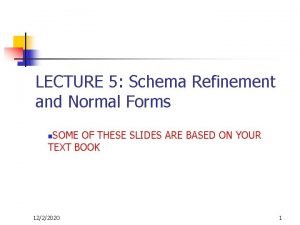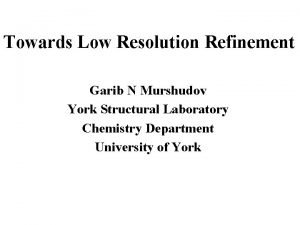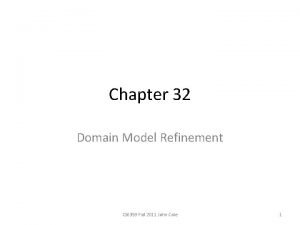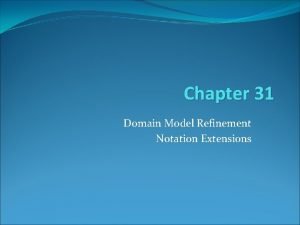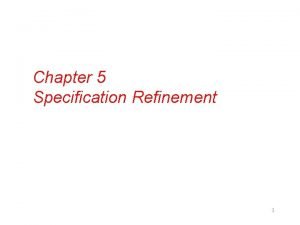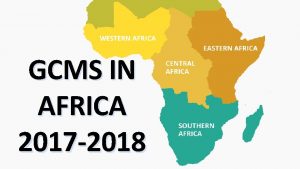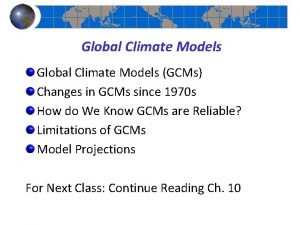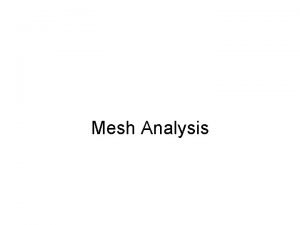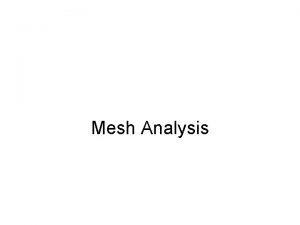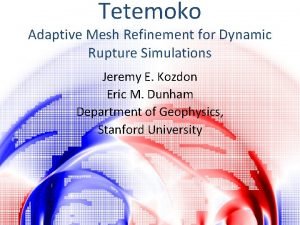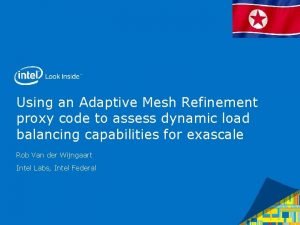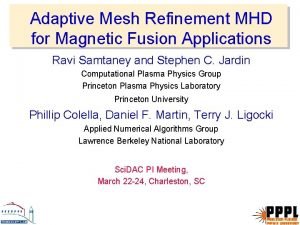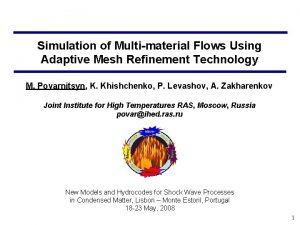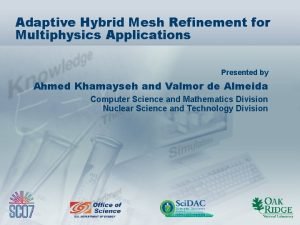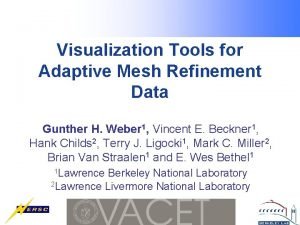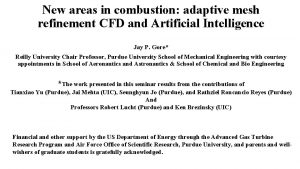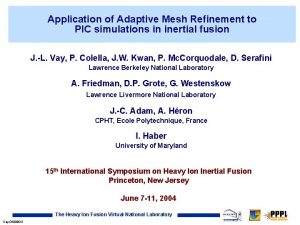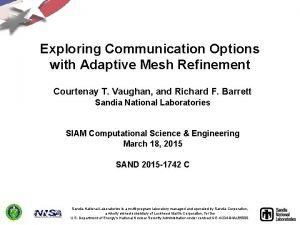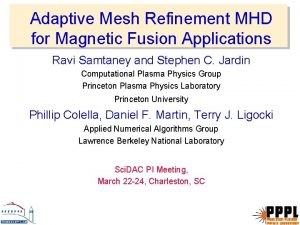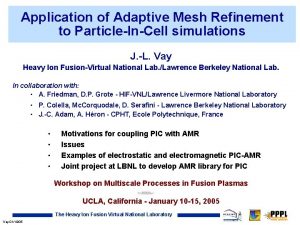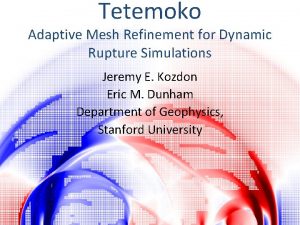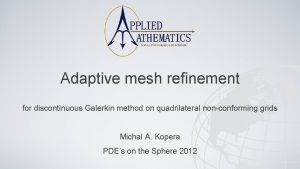An Adaptive Mesh Refinement Strategy for Future GCMs



























- Slides: 27

An Adaptive Mesh Refinement Strategy for Future GCMs Christiane Jablonowski 1, M. Herzog 2, R. Oehmke 2, J. E. Penner 2, Q. F. Stout 2, B. van Leer 2 1 National Center for Atmospheric Research, Boulder, CO 2 University of Michigan, Ann Arbor, MI PDEs on the Sphere, July 2004

Adaptive Grids for Weather and Climate Models Ø Goal: Build a hydrostatic dynamical core for a future General Circulation Model (GCM) that can statically and dynamically adapt its horizontal resolution with respect to – regions of interest – features of interest Ø Scientific computing challenge: Interdisciplinary UM team effort – Atmospheric science (Joyce Penner, Michael Herzog) – Numerics (Bram van Leer, Ken Powell) – Computer Science (Robert Oehmke, Quentin Stout) Ø Collaboration with NASA / GSFC: S. -J. Lin and Kevin Yeh

Features of interest in a multi-scale regime Hurricane Isabel 9/17/03

Adaptive Grids for Future GCMs l Novel dynamically adaptive 3 D dynamical core with structured grids on the sphere – based on NASA/NCAR’s finite volume hydrostatic dynamical core – Block data structure with AMR library support l Novel dynamically adaptive 2 D shallow water model on the sphere – Shallow water model is 1 -level version of the dynamical core

Adaptive Mesh Refinement Strategy in Spherical Geometry Self-similar blocks with 3 ghost cells in x & y direction

Block-data structure and Reduced Grids 1 reduction level 2 reduction levels

Ghost cell exchange at fine-coarse interfaces

Spherical Adaptive Grid Library Ø Block management is done by a Spherical Adaptive Grid Library: developed by Robert Oehmke & Quentin Stout (EECS, UM) Ø Designed for distributed memory parallel computers Ø Library manages: – – – Definition and distribution of the sphere: Initial grid setup MPI communication among neighboring blocks Load balancing: e. g. equal number of blocks on each processor Adaptive grids: generation/destruction of blocks, keeps track of neighbors Iterations through the blocks Ø User supplied routines: – Pack/unpack routines for boundary exchanges – Split / Join operations for boundary exchange if neighboring blocks are at different resolutions – Interpolation routines for data in newly refined/coarsened blocks

Overview of results: Highlights l 2 D shallow water tests: – First glimpse: Track the features of interest l Advection experiments (test case 1, Williamson et al. 1992) l Advection with a reduced grid – Static refinements in regions of interest (test case 2) – Dynamic refinements and refinement criteria: Flow over a mountain (test case 5) l 3 D dynamical core tests: – Static refinements along the storm track – Dynamic refinements with vorticity criterion

First glimpse: Adaptations at work

Errors: Cosine bell advection test Test case 1, = 90 • 2 nd order convergence

Dynamic adaptations and the reduced grid 2 reductions • No noise or distortions • accurate transport

2 D Static adaptations: Region of interest Test case 2, = 45 • Smooth flow in regimes with strong gradients

2 D Static adaptations: Closer look • Smooth wind field • No noise or distortions at the fine-coarse grid interface

2 D Static adaptations: Error norms Test case 2, = 45: • Errors at grid interfaces are moderate • Errors increase in regions with strong gradients

2 D Dynamic adaptations Test case 5

Adaptation criterion: Vorticity criterion detects regions with strong curvature

Adaptation criterion: Geopotential gradient Gradient criterion detects disconnected regions of the wave train

Baroclinic wave test case • analytically specified balanced initial field with overlaid perturbation • baroclinic wave develops after 5 -10 days • deterministic test that converges towards reference solution Jablonowski and Williamson 2004

Baroclinic waves in the 3 D regime • Jablonowski-Williamson baroclinic wave test case for dyn. cores • Coarse resolution does not resolve the wave train

Static adaptations in 3 D • 1 Refinement along the storm track improves the simulation

Static adaptations in 3 D • 2 Refinements along the storm track capture the wave accurately

Static adaptations in 3 D • 3 Refinements along the storm track: no further intensification

Dynamic adaptations in 3 D • Polvani et al. 2004 baroclinic wave test case • Refinements are guided by relative vorticity threshold

Dynamic adaptations in 3 D • Baroclinic wave is detected, more accurate prediction • Sensitive relative vorticity threshold: 0. 75*10 -5 1/s

Conclusions Ø Static and dynamic refinements on the sphere work Ø AMR is a current research topic for the atmospheric sciences Ø Future outlook: Ø Static and dynamic adaptations are a viable option for short-term weather predictions ü track storms as they appear ü focus on forecast region of interest: replace nested grids Ø Static adaptations are feasible for long-term climate studies ü refine mountainous terrain, reinitialize orography ð Future steps: Add NCAR’s ‘physics’ package, build a full GCM

Optimization issues: Load-balancing issues on parallel machines Same number of blocks per processor: discontinuous regions
 Types of meshing in ansys
Types of meshing in ansys Sliding mesh gear system
Sliding mesh gear system Future simple future continuous future perfect exercises
Future simple future continuous future perfect exercises Future perfect simple continuous
Future perfect simple continuous Stepwise refinement python
Stepwise refinement python Risk refinement in software engineering
Risk refinement in software engineering Schema refinement and normal forms
Schema refinement and normal forms Introduction to schema refinement
Introduction to schema refinement Fundamentals of rietveld refinement
Fundamentals of rietveld refinement Fundamentals of rietveld refinement
Fundamentals of rietveld refinement Fundamentals of rietveld refinement
Fundamentals of rietveld refinement Refinement
Refinement Stepwise refinement java
Stepwise refinement java Scott a speakman
Scott a speakman Jelly body refinement
Jelly body refinement T tess triangle
T tess triangle Schema refinement and normal forms
Schema refinement and normal forms Jelly body refinement
Jelly body refinement Schema refinement and normal forms
Schema refinement and normal forms Iterative refinement
Iterative refinement Iterative refinement
Iterative refinement Backlog refinement
Backlog refinement Purpose of normalization or schema refinement
Purpose of normalization or schema refinement Schema refinement and normal forms
Schema refinement and normal forms Jelly body refinement
Jelly body refinement Domain model refinement
Domain model refinement Domain model refinement
Domain model refinement Future perfect interrogative
Future perfect interrogative
